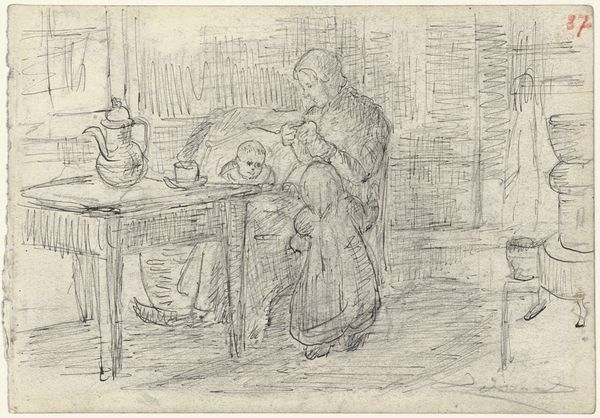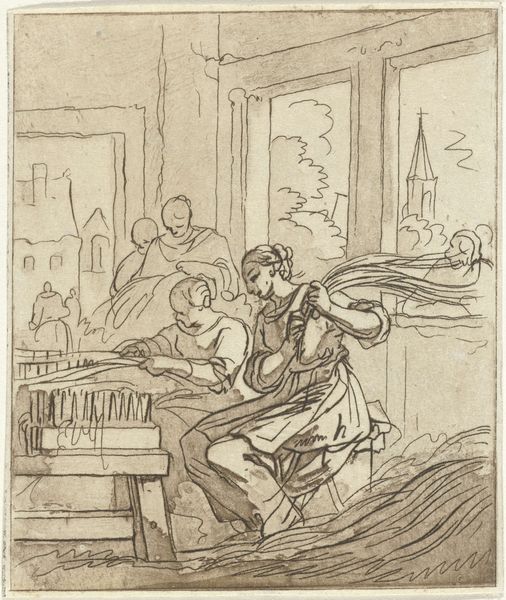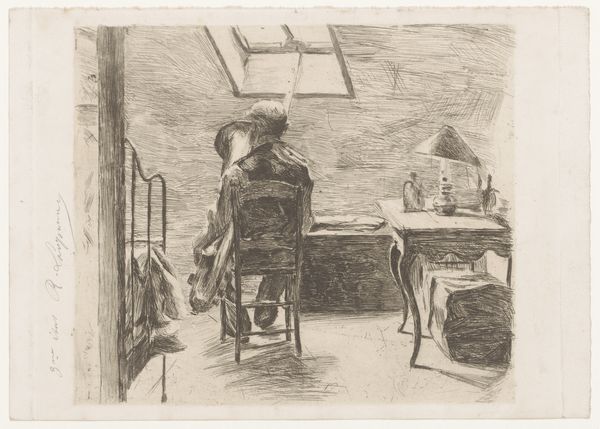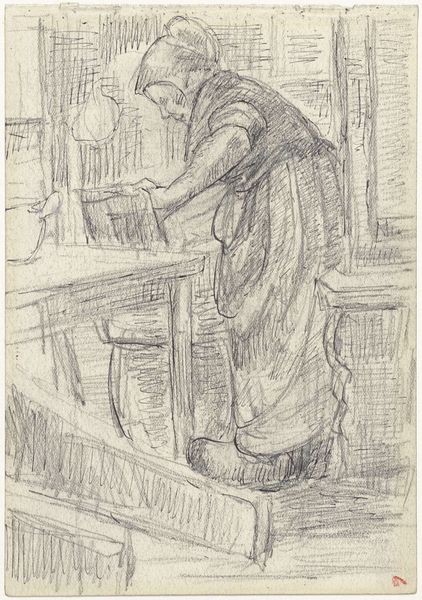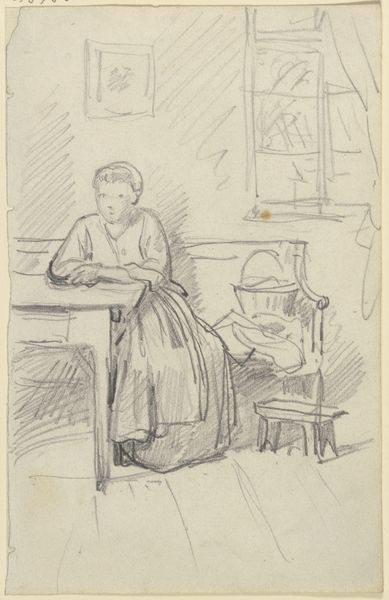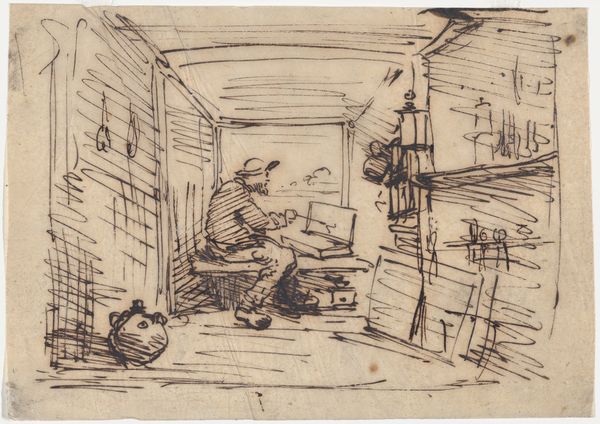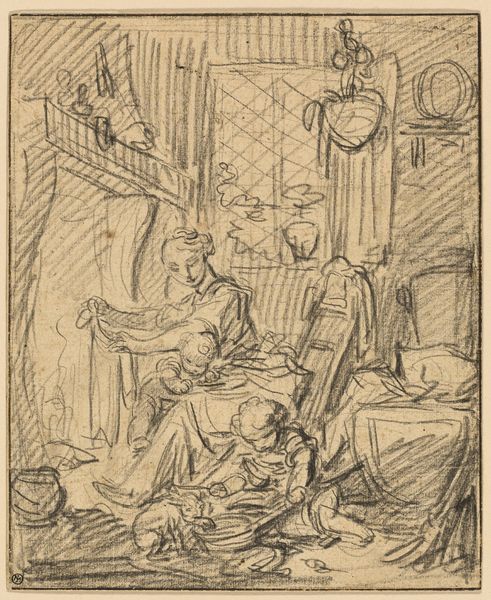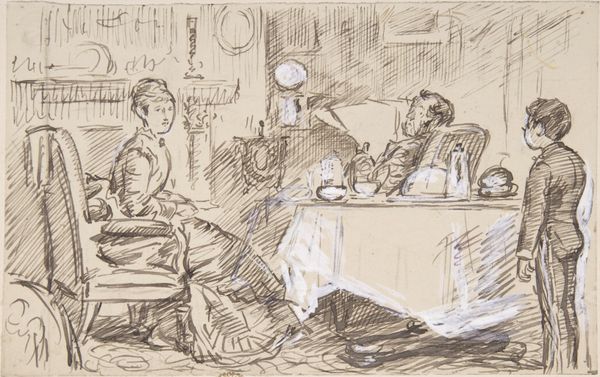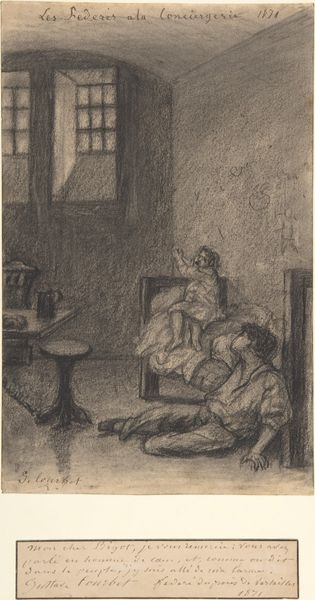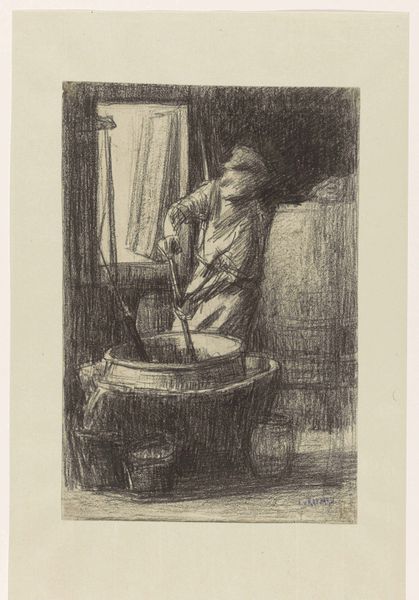
drawing, ink, pen
#
drawing
#
ink drawing
#
narrative-art
#
pen drawing
#
pen sketch
#
figuration
#
ink
#
pen
Dimensions: 248 mm (height) x 339 mm (width) (bladmaal)
Curator: Before us we have Fritz Syberg’s “Her boede en gammel Kone med sin Kat og sin Høn,” a pen and ink drawing completed in 1928. The title translates to "Here lived an old woman with her cat and her hen." Editor: My first thought? Home. A very particular kind of home, though. Quaint, almost melancholic, and utterly lived-in. The scratchy lines make it feel immediate, like a fleeting memory. Curator: The cross-hatching used to build form and shadow, does lend a kind of…density…to the scene. You sense a heavy, layered atmosphere despite the lightness of the medium itself. Notice, the cat curled up, almost as part of the old woman's dress—a visual manifestation of symbiosis and familiarity. Editor: Exactly! The composition too—the hen perched precariously on the chair back, the spinning wheel taking up space. These create a rhythm of daily life, domestic labor intertwined with companionship. It speaks volumes. Is she spinning? Or perhaps mending something? Curator: Probably spinning; either way, it becomes a cyclical act. We can think about spinning, historically, in terms of weaving fate, female labour, storytelling. Fairytales always include a crone near the fireplace. And domestic animals feature prominently in allegories of virtues and vices as well. Editor: It's all archetypal imagery, then, whispering about folklore and the endurance of the ordinary. I keep coming back to that line quality, it really lends this rawness. Nothing is softened or romanticized, just a spare, unflinching depiction. The window and its pots is beautiful but it’s also harsh. The exterior light only offers relief from the dim space where shadows engulf most corners of the frame. Curator: We should think, too, of what those repeated symbols signify to our contemporary sensibilities. What meaning do we, modern observers, give the spinning wheel? Has it become quaint now, or does it resonate beyond our experience as a relic? What new associations do we attach to such icons? Editor: Definitely food for thought! It makes you realize how potent these seemingly simple images can be—holding onto so many threads of cultural memory, waiting to be tugged. Curator: Precisely, a reminder that even within a single room, entire worlds of history and meaning can reside.
Comments
No comments
Be the first to comment and join the conversation on the ultimate creative platform.
